Europe is home to some of the world’s most amazing castles. So it’s not surprising that some of the best World Heritage castles are in Europe. Located in every part of the continent, these beautiful UNESCO listed castles are as impressive as they are varied. There are so many that it’s hard to decide on the most impressive World Heritage castles in Europe, but we’ve done our best! So read on, for our guide to Europe’s best World Heritage castles.
And of course, don’t forget to check out World Heritage Journey on YouTube for the latest videos. You can also follow us on Facebook, where we post about interesting World Heritage Sites.
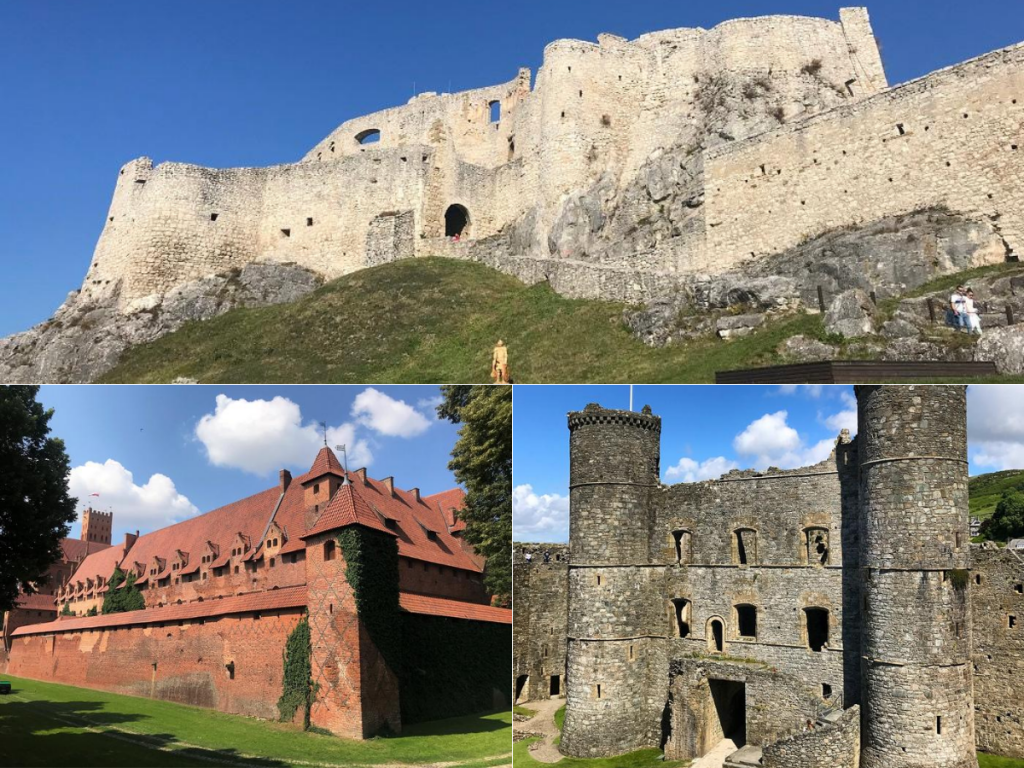
Citè de Carcassonne – World Heritage Site
The immense walled city and castle of Carcassonne in southern France is definitely one of the best World Heritage castles in Europe. Located near Toulouse in Occitanie, Carcassonne was an important fortress and settlement even back during the Roman era. Much of what what’s visible today was built during the 13th and 14th centuries, when the walls were expanded and reconstructed. The heavily fortified towers were also added around this time.
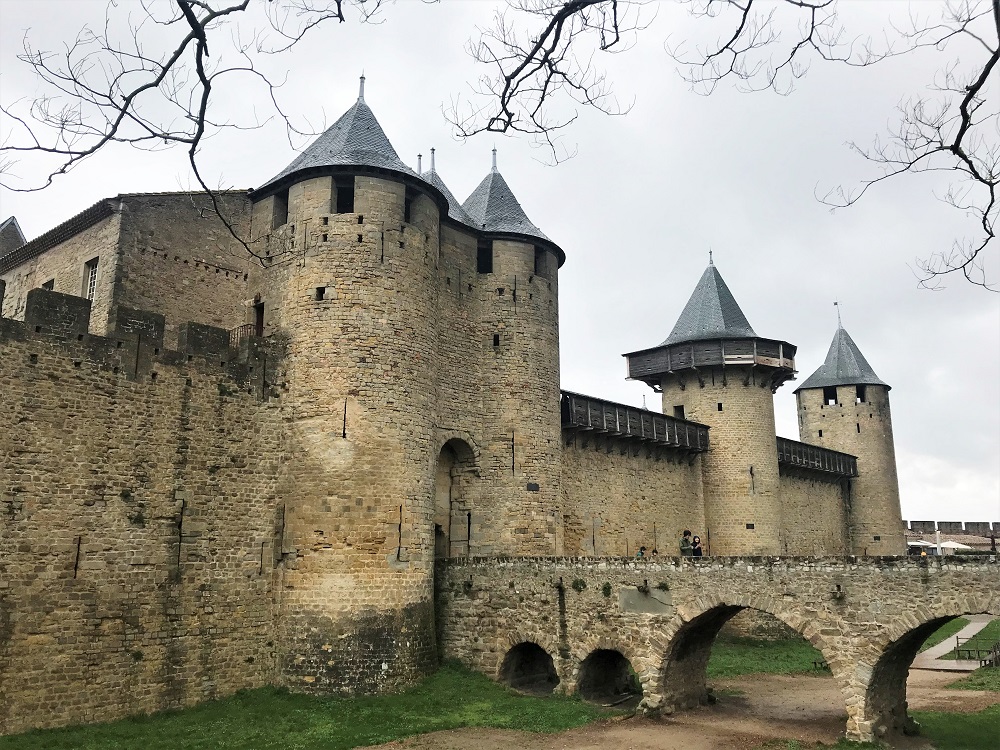
Interestingly, the castle had mostly fallen into ruin by the mid-19th century, and the French government proposed demolishing it entirely. Thankfully, locals managed to save the castle, and it was restored over a 20-year period by architect Eugène Viollet-le-Duc. He was also responsible for restoring Notre-Dame in Paris, which occurred around the same time.
Crossing the moat and passing under the walls of Carcassonne with its 52 towers, there’s a surprisingly large fortified town. Don’t miss the 12th century Basilique Saint-Nazaire with its exquisite stained-glass windows, or the imposing Count’s Castle. Southern France is a beautiful part of the world, and Carcassonne is a genuine highlight.
Spiš Castle (Spissky Hrad) – World Heritage Site
Spiš Castle, also known as Spišský hrad, is a large ruined castle in the east of Slovakia. At over 41,000 square metres, it’s one of the largest castles in Europe. Construction started in the 12th century, but today’s castle is mainly from later rebuilds in the 15th and 16th centuries.
It’s a genuinely impressive sight! Tall white stone walls and towers, crowning a hill that stands high above the plains of Slovakia. It’s visible from miles around, demonstrating clearly why it was such an important place for centuries. It was even a palace for the Hungarian kings.
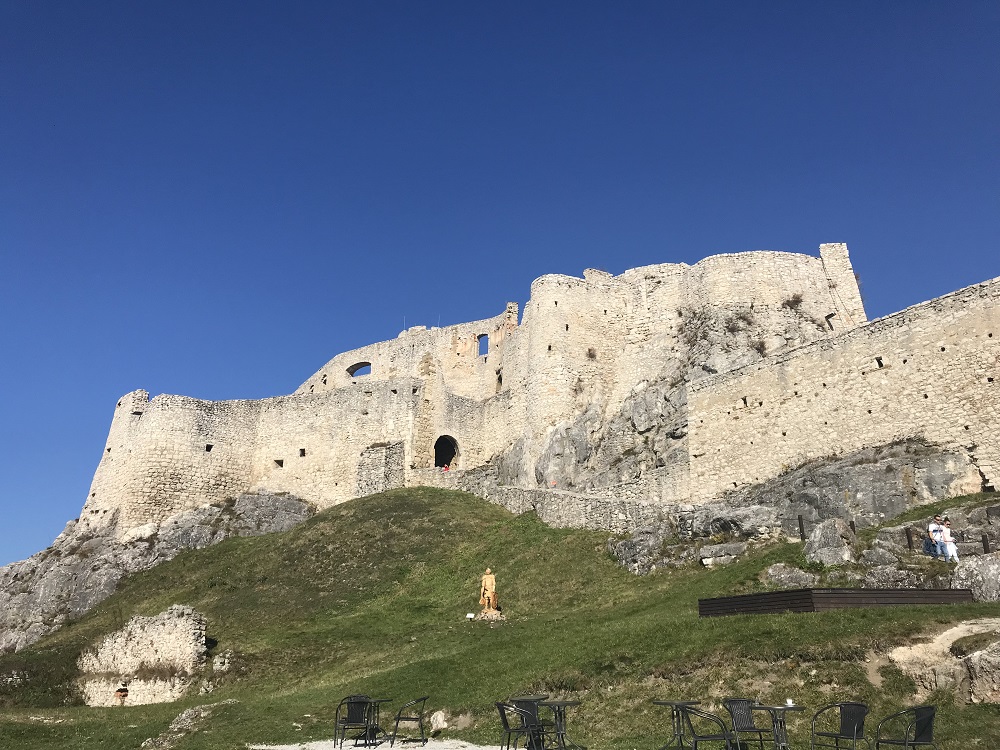
Unfortunately it was abandoned in the early 18th century, and then in 1780 much of the castle burned down. The cause of the fire is unknown (rumours range from lightning or deliberate arson, to an accident involving soldiers brewing moonshine), and sadly most of the castle’s buildings were reduced to rubble.
But it’s still a fascinating place to visit! There’s plenty to see on site, and the relative obscurity allows you to wander around and really imagine yourself back in the medieval era.
Kronborg Castle – World Heritage Site
Although we’ve written about the fantastic Kronborg Castle World Heritage site before, it definitely still ranks as one of the most impressive World Heritage castles in Europe. Located at the far north-eastern tip of Denmark, just across a narrow strait from Sweden, Kronborg sits at the main entrance to the strategically important Baltic Sea. It was built in the early 15th century for two reasons. Firstly, to guard the sea passage, but more importantly, to collect customs duties from ships passing the busy narrow channel. The fortress was improved and strengthened at various points, though it was also heavily damaged in a 1629 fire.
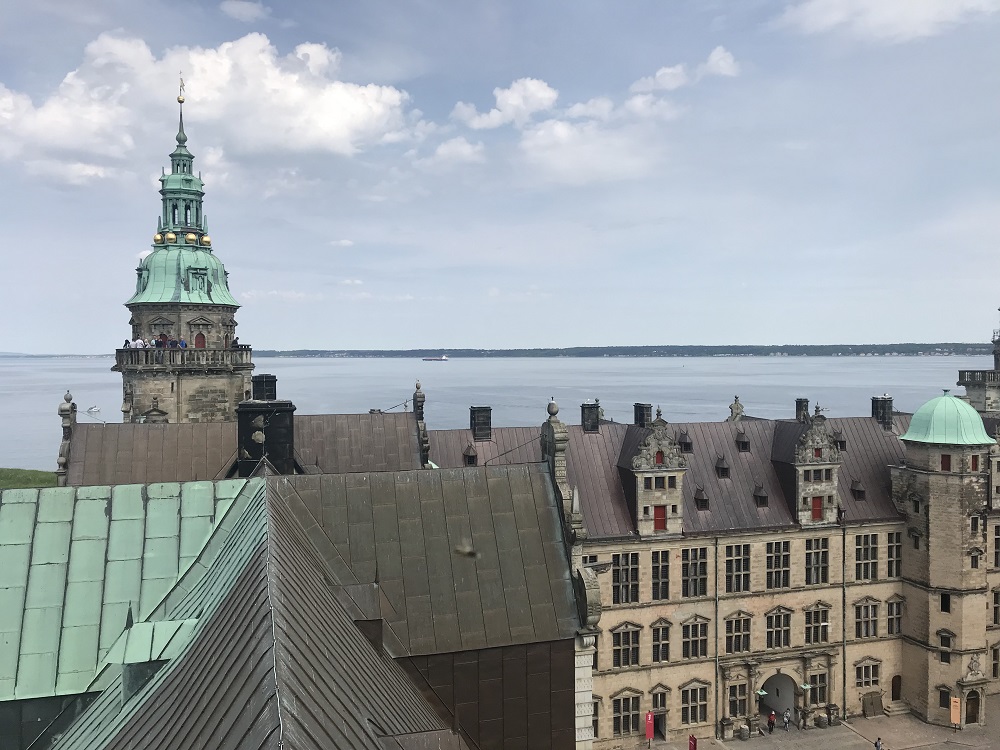
Interestingly, Kronborg Castle also has an unexpected literary connection! It’s the inspiration for Elsinore, the fictional castle where Shakespeare’s Hamlet takes place. The nearest town to Kronborg is Helsingore, which translates to Elsinore. It’s unknown whether Shakespeare actually visited the area, but sadly that seems fairly unlikely.
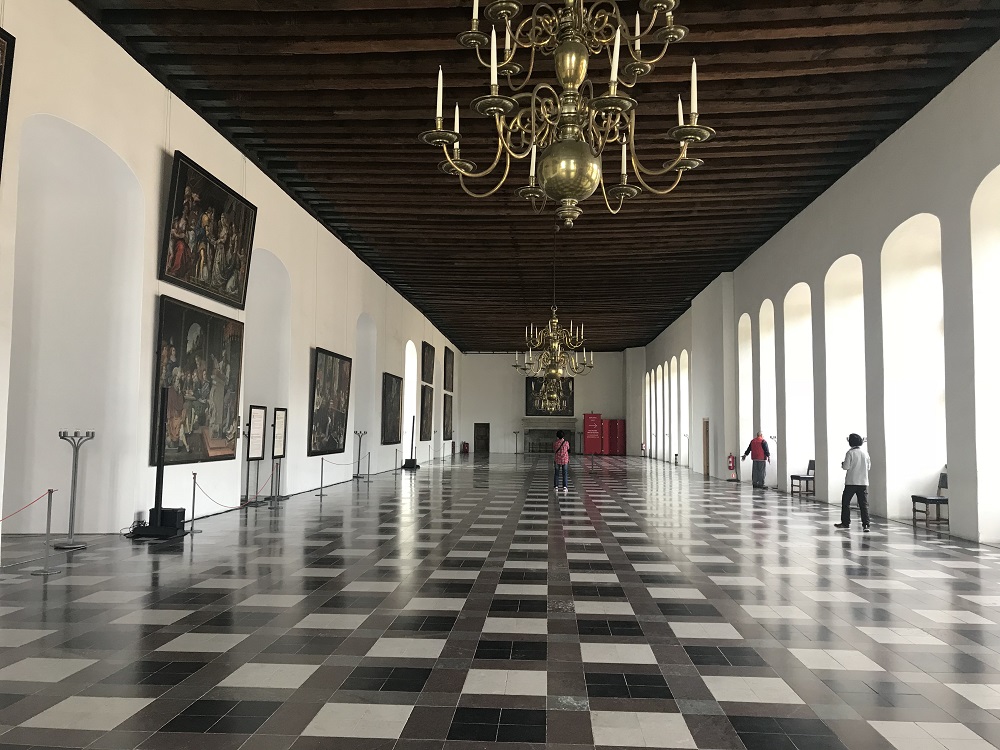
Although the outside of the castle is very impressive, mixing Renaissance architecture with strong fortifications, the inside isn’t quite as interesting. A lot of the furniture and decorations are long gone. However, there’s still a great collection of paintings and tapestries hanging in the large ballroom. And of course, there are often actors on site performing scenes from Hamlet!
King Edward I Castles of Wales – World Heritage Site
This fascinating World Heritage Site covers four impressive castles and fortifications in Gwynedd, northern Wales. Beaumaris, Caernarfon, Conwy and Harlech castles were built in the late 13th century by the English King Edward I, who had recently invaded and conquered the area. To display his royal power, cement his rule and cow the Welsh into submission, these four immense castles were erected.
Even today, 750 years later, the castles are supremely impressive. They were deliberately designed to evoke images of the mythical King Arthur, to promote English superiority and to reinforce the English settlers who moved into the area.
Although all four castles were built at around the same time, it’s fascinating to see the differences between them. Caernarfon is the largest and strongest of the castles, though it was never actually completed. Interestingly, King Edward’s son (Edward II) was born in Caernarfon. To further symbolise his power over the Welsh, King Edward titled his son and heir as the Prince of Wales. That tradition has continued to this day; Prince Charles is both the heir, and the Prince of Wales!
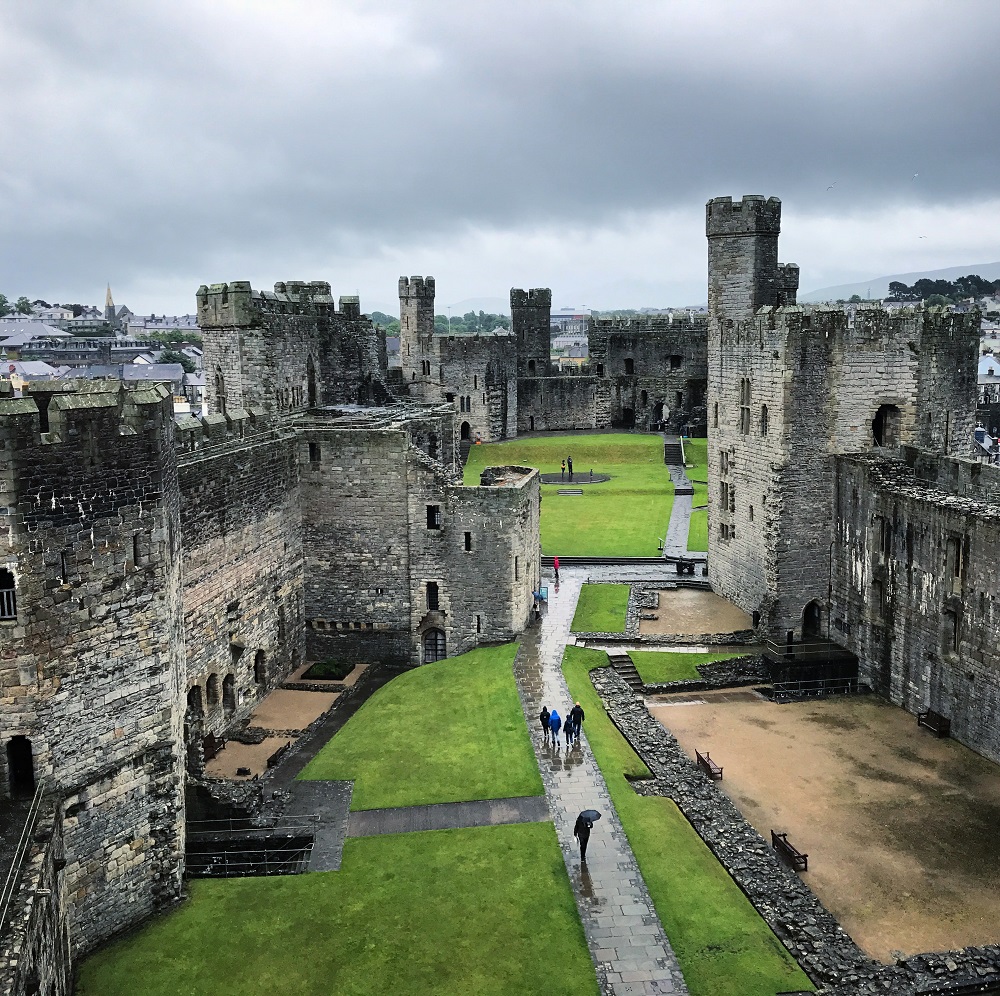
Beaumaris Castle is almost perfectly symmetrical, with the octagonal outer wall surrounding the square inner wall. Both walls are heavily fortified with gates, towers and barbicans, ringed with moats, and bristling with medieval weaponry. Though like Caernarfon, Beaumaris was also left unfinished. King Edward was running short of money thanks to wars in Scotland, and construction was eventually abandoned.
Harlech Castle has a similar design to Beaumaris: carefully symmetrical and heavily fortified. It sits on a tall hill of rock, and commands an excellent view of the surrounding area. It’s also located right on the coast, and was design to withstand assaults from both land and sea. Unlike Beaumaris and Caernarfon, Harlech was actually completed, and in just seven years – an incredibly short time.
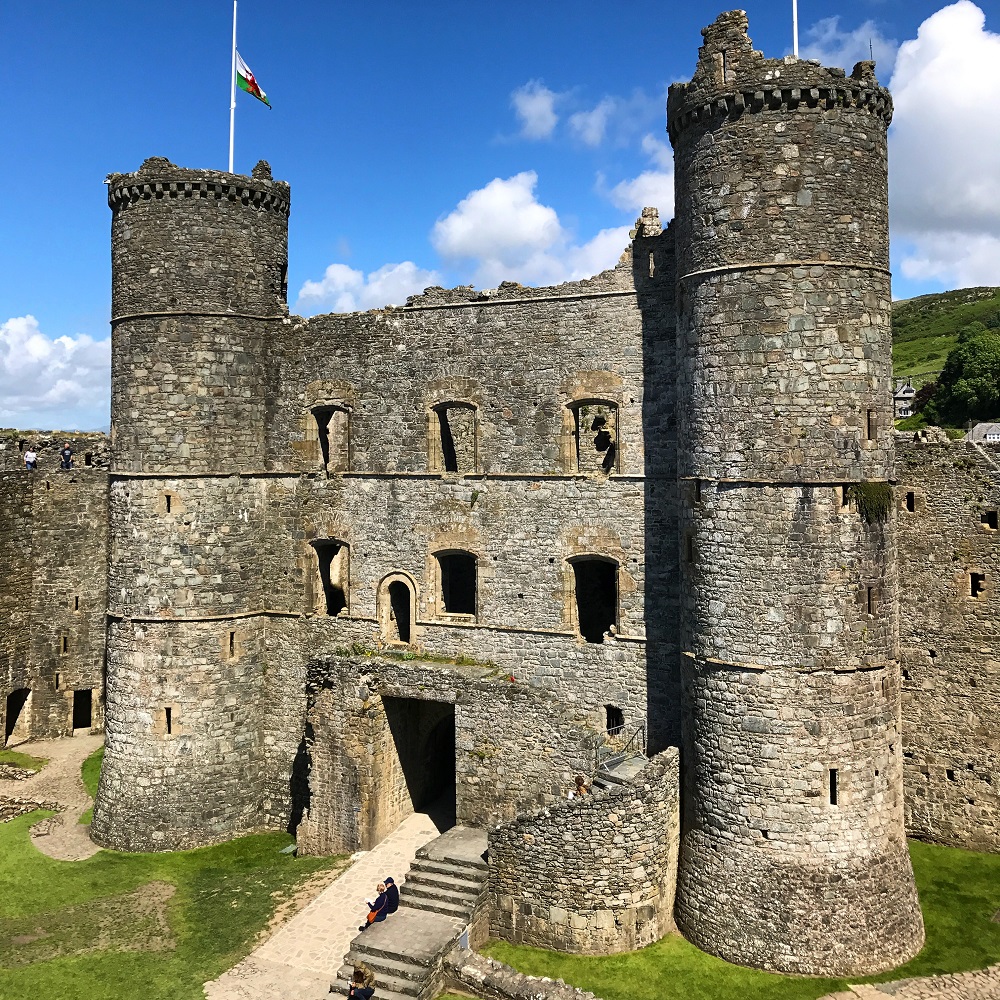
And finally there’s Conwy Castle, which was completed around the same time as Harlech. It has a very different design, rectangular in shape with inner and outer sections. It sits right along a sea edge, and has a well-preserved set of royal apartments inside.
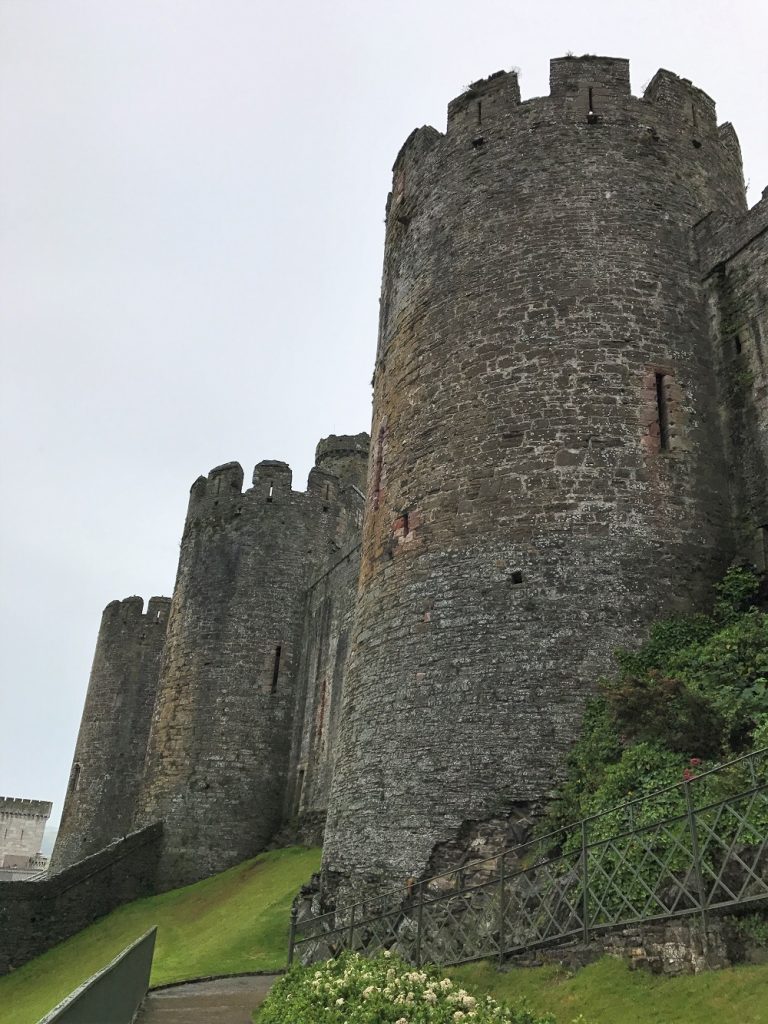
Three Castles of Bellinzona – World Heritage Site
The Three Castles of Bellinzona World Heritage Site is located in southern Switzerland, around the town of Bellinzona. It sits right on a major pass south through the Alps into Italy, and has been a strategic location since the Roman Empire.
The first, and most impressive of the castles, is Castelgrande. It’s the oldest castle here, and has existed since Roman times, though most of what’s visible today was built in the 13th-15th centuries. It’s surprisingly large, and hugs the contours of the hill where it sits. At the heart of the complex is the beautiful Torre Bianca, or White Tower.
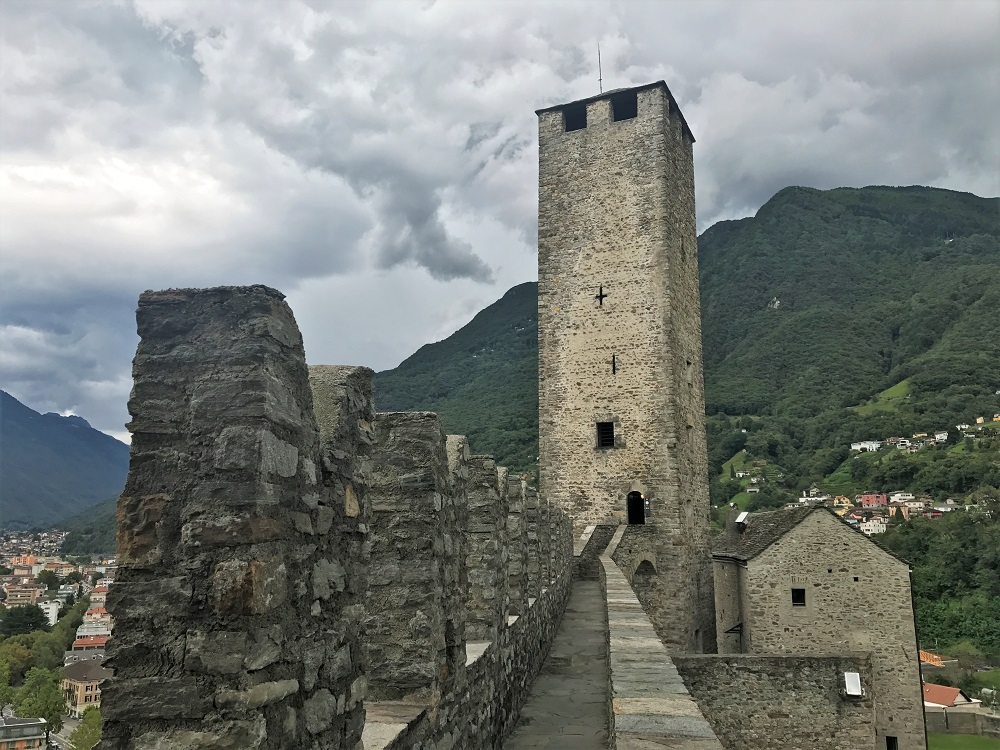
Uphill to the south-east sits the second castle: Montebello. It was built in the 13th century and expanded into its current form during the 15th century. Montebello is integrated into the city’s defensive walls, and is a fantastic sight, looming above the tower. And as the name suggests, it gives you a fantastic view of the entire mountain pass!
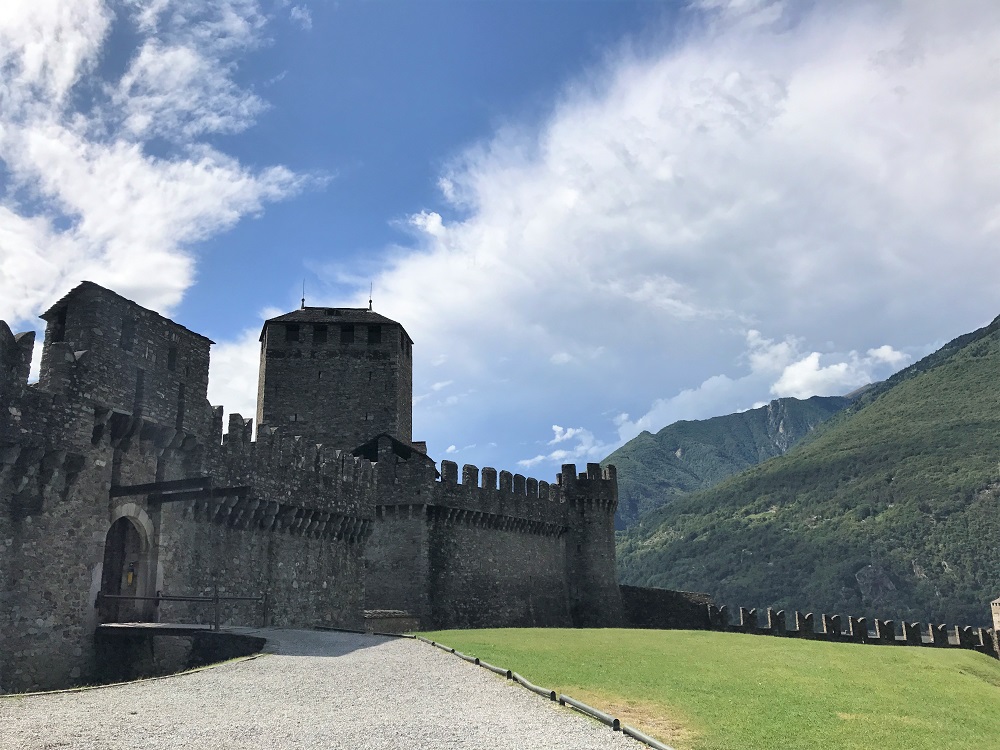
Finally, further up the steep hillside is the third and youngest castle, Sasso Corbaro. Dating to the late 15th century, Sasso Corbaro was more of a defensive outpost and prison than a castle, and it wasn’t integrated into Bellinzona’s city walls.
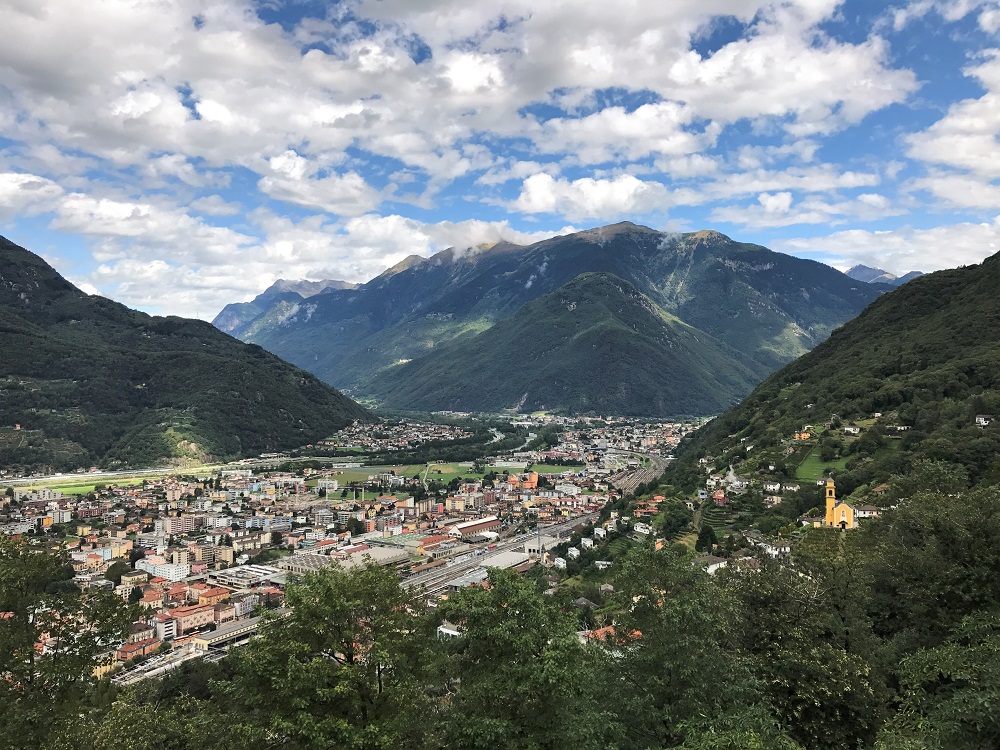
Taken together, the three castles are a fantastic example of late medieval castle architecture. It’s easy to see why the valley was such an important military and economic area, and why such imposing fortifications were necessary.
Malbork Castle – World Heritage Site
Located near Poland’s north coast, Malbork Castle is definitely one of the most beautiful World Heritage castles in Europe. It was built in the 13th century by the Teutonic Order, a group of Germanic crusader monks, who called it Marienburg. When completed in 1406, it was the world’s largest brick castle. Incredibly, it’s still one of the world’s largest castles by land area.
It’s got that classic central-European castle look, with a mixture of square towers and conical spires. And of course the rough orange brickwork, offset by the bright red roof tiles.
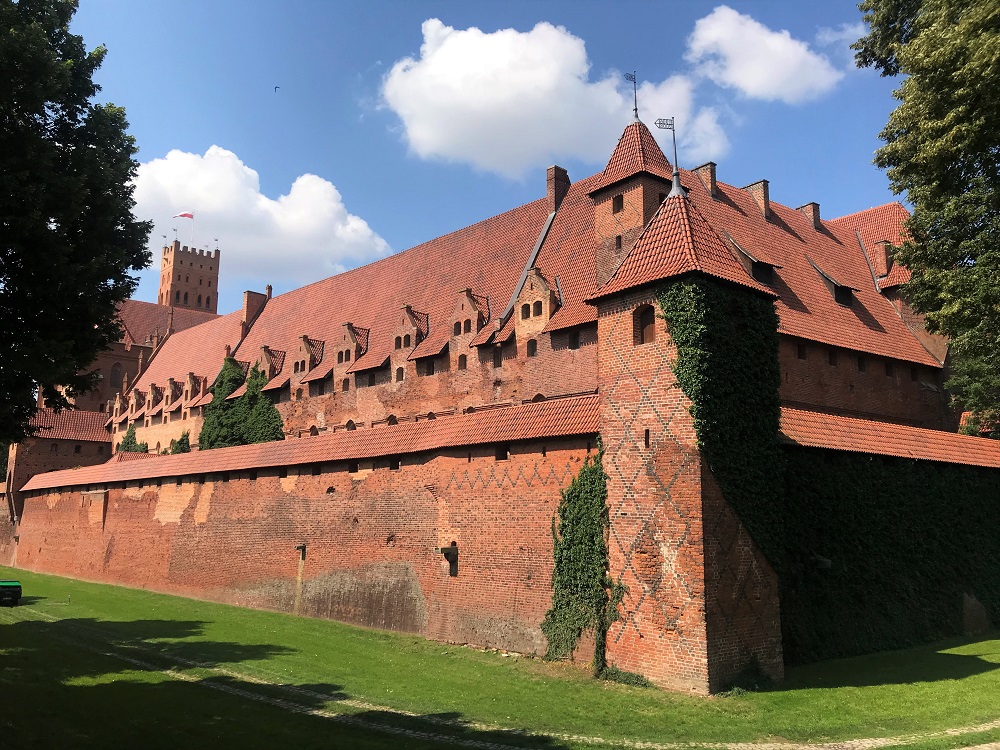
The castle is split into three sections known as the Upper, Middle, and Lower sections. It really highlights the Teutonic Order’s origins as warrior monks, as the Upper section is mostly devoted to monastic life. Refectories, dormitories, chapels and kitchens are all located here, where the monks could pray and live in peace.
The Middle castle, surrounding the Upper castle, has more administrative and military-focused buildings. There’s reception halls here for greeting foreign dignitaries, more prayer spaces, but also an armory and other buildings for outfitting and maintaining the Order’s knights.
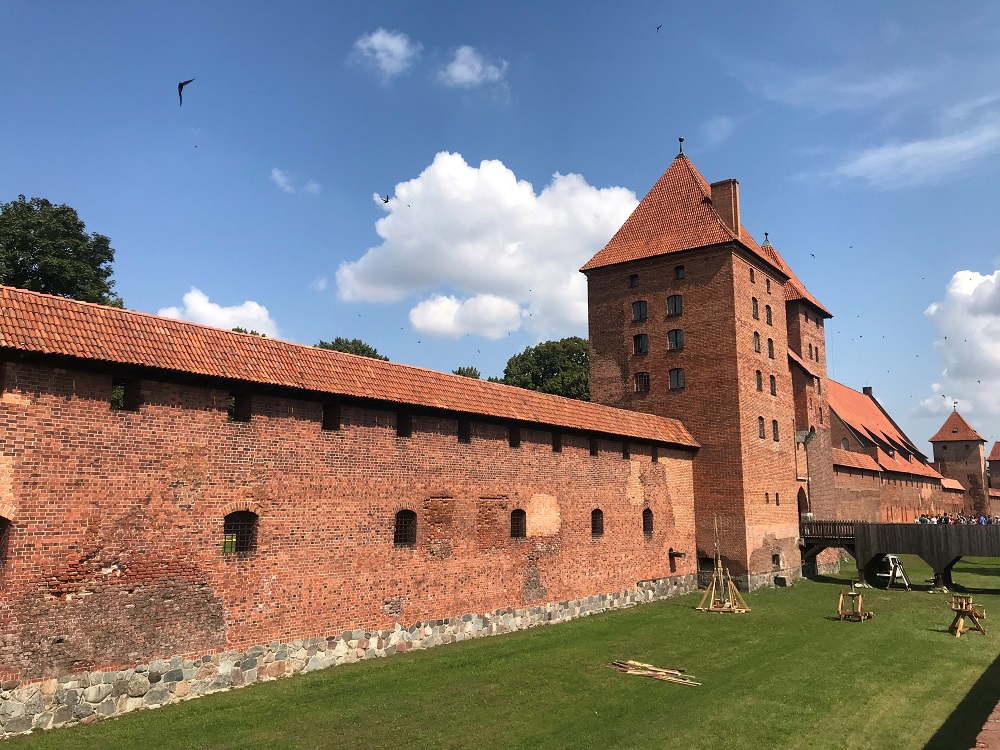
And finally there’s the Lower castle, which was actually mostly agrarian. A long brick curtain wall surrounded small hamlets and fields, keeping the castle supplied during times of war. It’s an excellent place to visit, and another fantastic World Heritage castle in Europe.
